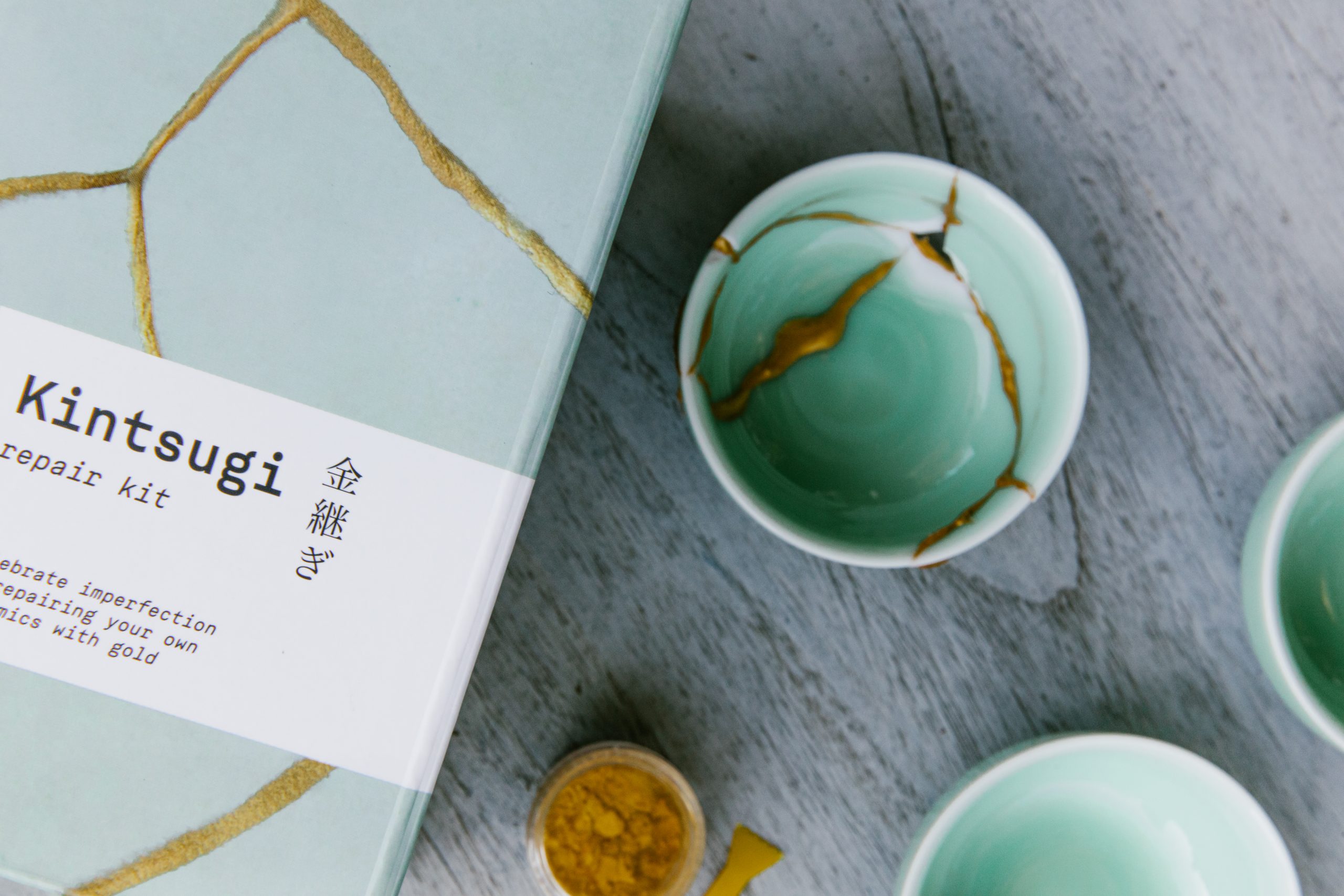Wabi-sabi is a fundamental, albeit complex, Japanese concept. Derived from the principles of Zen Buddhism, wabi-sabi is an aesthetic ideal, a philosophy, an art or a way of life (depending on whom you ask).
According to Marie, wabi-sabi is “experiencing beauty in simplicity and calmness – and is considered a virtue in Japanese society.” Also wabi-sabi? Appreciating and caring for your belongings – and carefully mending beloved items instead of replacing them with something new that doesn’t necessarily spark joy.
The Japanese practice that perhaps most exemplifies the spirit of wabi-sabi is kintsugi. Kintsugi is the art of golden joinery, in which broken objects – usually ceramics – are mended with gold-dusted lacquer. Kintsugi’s exact origins are unknown, but some historians date it as far back as the late 15th century. As the story goes, a Japanese shogun sent a one-of-a-kind chawan – or tea bowl – back to China for repairs. The bowl returned in one piece, but was awkwardly stuck together with unseemly metal staples. Local craftsmen – aware of the shogun’s displeasure and eager to please – improvised a more appealing repair. Kintsugi was born.

Kintsugi transforms broken pieces into a new object; the mended cracks become part of its unique history and enhance its beauty. Rather than hiding our imperfections, wabi-sabi encourages us to accept our “flaws” – and even to call attention to them. Wabi-sabi is the practice of coaxing beauty out of unexpected places, from a broken vase and teacup to upended plans and unexpected setbacks.
For more on the craft of kintsugi, read KonMari’s detailed guide, Beauty in Broken Things: The Art of Kintsugi.








